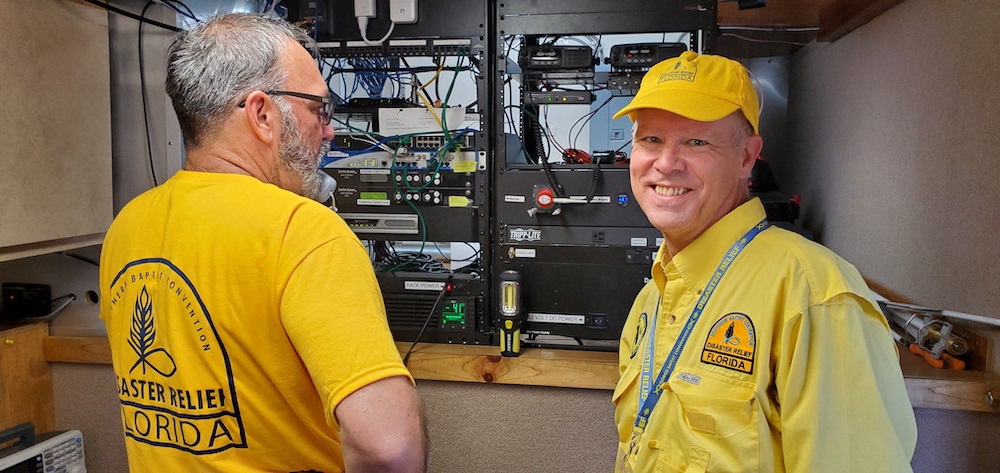FLDR ham radio operators gearing up to provide emergency communications
JACKSONVILLE— When Category 5 Hurricane Michael made landfall south of Panama City in October 2016, the storm with maximum sustained winds of 160 mph destroyed most communications capabilities needed by the community and disaster relief teams responding to emergency needs of the hard-hit cities and towns across the Panhandle.
“Our volunteers struggled to get critical communications out of the affected area because we relied on cellular communications, which the storm had destroyed,” said Brad Gwartney, who coordinates communications and technology for the Florida Baptist Disaster Relief (FLDR).
“We needed to find a better solution because, in any disaster, our teams need to be able to communicate to make sure we can get the resources necessary so we can provide help, healing, and hope to survivors of a disaster,” said Gwartney, pastor of discipleship and administration at Stetson Baptist Church in Deland.
The storm “took out most communications capability and it was then that our ham radio group got its start,” said Gordon Gibby, FLDR volunteer and member of Westside Baptist Church in Gainesville.
 Amateur radio operators, also known as hams, provide critical emergency communications during natural disasters. They use radio frequency spectrum for purposes of non-commercial exchange of messages in two-way personal communications with other individuals. The radio frequencies are assigned by the Federal Communications Commission (FCC) in the United States and the International Telecommunication Union worldwide.
Amateur radio operators, also known as hams, provide critical emergency communications during natural disasters. They use radio frequency spectrum for purposes of non-commercial exchange of messages in two-way personal communications with other individuals. The radio frequencies are assigned by the Federal Communications Commission (FCC) in the United States and the International Telecommunication Union worldwide.
“Our ham teams are a rapid communication solution with the licensing and capability to communicate food orders, send emails, and even provide damage assessments through our mobile units (ham go boxes) no matter how affected the area is,” said Gwartney.
In March, FLDR communications volunteers participated in a training exercise designed to simulate the types of conditions and volunteer and professional communications responses that Floridians and others have encountered in major disasters.
Participants were asked to respond to a swarm of tornadoes moving across the peninsula of Florida causing massive disasters in their path. The situation was further complicated by a domestic terrorist bombing of important communications facilities rendering cell phone and wide area networked communications useless.
The two-hour, multi-state disaster simulation was held March 19.
Gibby designed the exercise to teach technology required to use a satellite system, configure computers to use that system, demonstrate privacy protocol for over the air transmissions, and use of the equipment itself. The introductory level volunteers were tasked with going into areas with assessors to identify safety issues, communications issues or helping other radio operators.
 The March simulation gave the FLDR group opportunity to test themselves and to become better known among other state disaster relief ham radio ministries.
The March simulation gave the FLDR group opportunity to test themselves and to become better known among other state disaster relief ham radio ministries.
Gibby is also training several other FLDR volunteers on how to operate ham radios. “We can use people who don’t even have a ham radio license,” he said, adding that they would be operating under the Florida Baptists’ license during disaster operations.
“When a disaster happens, the team members will deploy and communicate back to FLDR leadership about conditions on the ground. This communication will allow us to mobilize the needed resources quickly,” said Gwartney. “Our communications team is the backbone of this operation.”
The FLDR’s simulation will be featured in the June issue of “QST,” a magazine for amateur radio enthusiasts. Gibby said the article reveals to others that “believers being salt and light are literally pioneering the path for much of amateur radio to develop better training programs.”

